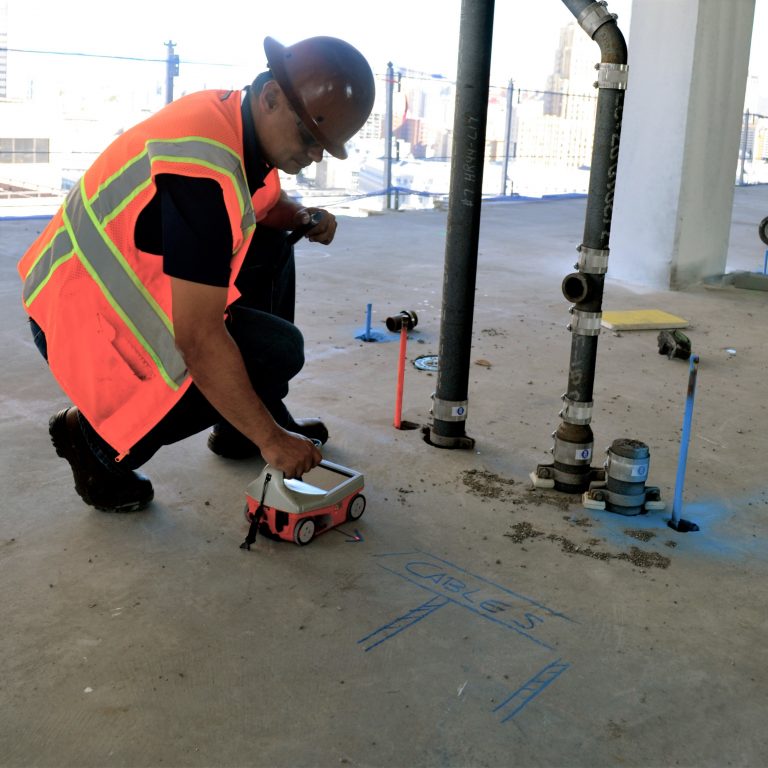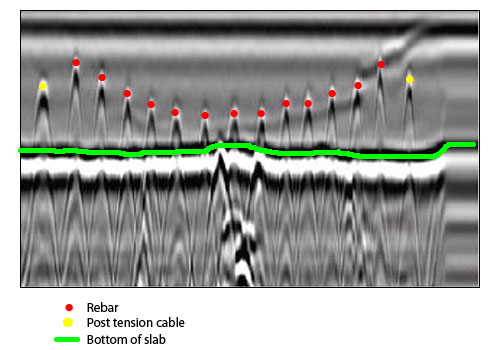RainierGPR Concrete Scanning: Precision and Safety for Building And Construction Projects
RainierGPR Concrete Scanning: Precision and Safety for Building And Construction Projects
Blog Article
The Significance of Exact Concrete Scanning in Detecting Underground Hazards
In the realm of building and construction and framework growth, the value of accurate concrete scanning can not be overemphasized. Underneath the seemingly strong ground lie detailed networks of energies, pipelines, and other subsurface structures that are typically unseen to the naked eye. The capability to accurately spot and map these underground hazards is not simply an issue of benefit however a critical element of making sure the security of both construction workers and the stability of the project itself. By deploying advanced scanning modern technologies and techniques, professionals can reveal concealed dangers, prevent costly problems, and eventually lead the method for smoother and much safer building ventures.
Advanced Scanning Technologies for Detection
Cutting-edge radar systems are reinventing the field of underground discovery by offering exceptional accuracy and efficiency. These innovative scanning technologies use ground-penetrating radar (GPR) to produce thorough images of subsurface frameworks, supplying understandings right into what lies beneath the surface area with exceptional clarity. By sending out high-frequency pulses into the ground and determining the representations, radar systems can identify variations in material structure and identify underground threats such as voids, pipes, and cable televisions.
Among the key benefits of these advanced radar systems is their non-invasive nature, enabling complete inspections without causing damages to the existing frameworks. This not just guarantees the security of the surrounding environment however likewise reduces the requirement for costly repair services or disruptions to recurring building and construction projects. In addition, the real-time data provided by these scanning modern technologies enables quick decision-making and improves general task performance.
Value of Subsurface Mapping

Exact subsurface mapping aids in stopping costly problems to existing below ground framework, decreasing the threat of mishaps, and maintaining task timelines. It makes it possible for task supervisors to make informed decisions relating to site planning, tools deployment, and source allocation. Furthermore, subsurface mapping enables for far better coordination among different teams functioning on a project and helps in adhering to regulatory requirements connected to below ground utility discovery.
Mitigating Risks in Construction Jobs
Efficient risk reduction techniques are crucial for making sure the success and safety of building and construction jobs. One vital element of mitigating threats in construction tasks is detailed planning and evaluation at the first stages.
Additionally, establishing clear interaction networks among all job stakeholders and making certain rigorous adherence to safety procedures are vital components of risk reduction. Regular assessments, quality assurance steps, and monitoring of work development can aid in identifying and dealing with any emerging dangers without delay. Additionally, having contingency plans in position for unanticipated challenges can considerably minimize the impact of disturbances on the job. By proactively applying robust danger mitigation approaches, building projects can lessen hold-ups, expense overruns, and security cases, ultimately leading to effective project end results.

Protecting Against Expensive Damages and Delays
To reduce monetary losses and job troubles, reliable strategies have to be applied to stop costly problems and delays in building projects. One crucial method to achieve this is by performing thorough concrete scanning before any excavation work begins. By making use of advanced scanning technologies such as ground-penetrating radar (GPR) and electro-magnetic induction, building groups can accurately discover below ground hazards like rebar, channels, and various other utilities. Determining these blockages early on aids in intending the job format much more effectively and preventing possible damages during excavation.
Furthermore, buying training programs for building workers on the importance of concrete scanning and secure excavation techniques can significantly decrease the danger of mishaps and delays. Clear communication channels between task managers, designers, and on-site employees are likewise important to guarantee that every person is conscious of the potential hazards and adheres to the essential methods to stop costly problems. By prioritizing aggressive steps like concrete scanning and promoting a culture of safety and understanding, building jobs can decrease the economic effect see here of unanticipated underground blockages and avoid pricey delays.
Ensuring Safety of On-Site Personnel
By prioritizing proactive actions such as comprehensive training programs and clear communication networks, construction jobs can ensure the safety and security of on-site personnel amidst the potential risks discovered via concrete scanning. Appropriate training outfits workers with the understanding and skills required to browse construction websites safely, particularly when hazards are recognized through scanning processes. Training must cover threat recognition, emergency situation procedures, and the proper use of individual safety equipment to mitigate threats effectively.
Furthermore, establishing clear interaction networks is crucial for disseminating details regarding recognized threats quickly. This makes certain that all on-site personnel recognize potential threats and can take required preventative measures to avoid mishaps. Routine security instructions, tool kit talks, and consistent updates regarding scanning results help keep everyone notified and positive in maintaining a risk-free functioning atmosphere.
Additionally, carrying out stringent adherence to security procedures and regulations, performing normal safety audits, and cultivating a culture of security awareness among workers are important components in making certain the wellness of on-site personnel during building tasks - RainierGPR Concrete Scanning. Positive safety and security actions not just protect workers from injury however also contribute to the overall success and performance of the project
Conclusion
In final thought, precise concrete scanning plays an important duty check my site in spotting below ground dangers. Making use of sophisticated scanning technologies and subsurface mapping helps alleviate threats in building tasks, protecting against pricey damages and hold-ups. By ensuring the safety of on-site personnel, accurate scanning can significantly improve the performance and success of construction procedures. It is necessary for construction firms to focus on making use of precise scanning approaches to minimize possible hazards and make sure a smooth building process.

By proactively applying durable risk mitigation approaches, building jobs can reduce delays, expense overruns, and security occurrences, eventually leading to effective job end results. - RainierGPR Concrete Scanning
To reduce monetary losses and project problems, effective strategies must be implemented to prevent pricey damages and hold-ups in building and construction jobs. By focusing on positive steps like concrete scanning and promoting a culture of safety and security and recognition, building tasks can lessen the monetary impact of unexpected below ground obstructions and avoid expensive delays.
By prioritizing proactive measures such as thorough training programs and clear interaction channels, building and construction projects can guarantee the safety of on-site employees amidst the potential threats found through concrete scanning. Utilizing discover this info here advanced scanning modern technologies and subsurface mapping assists mitigate threats in building tasks, protecting against pricey damages and hold-ups.
Report this page